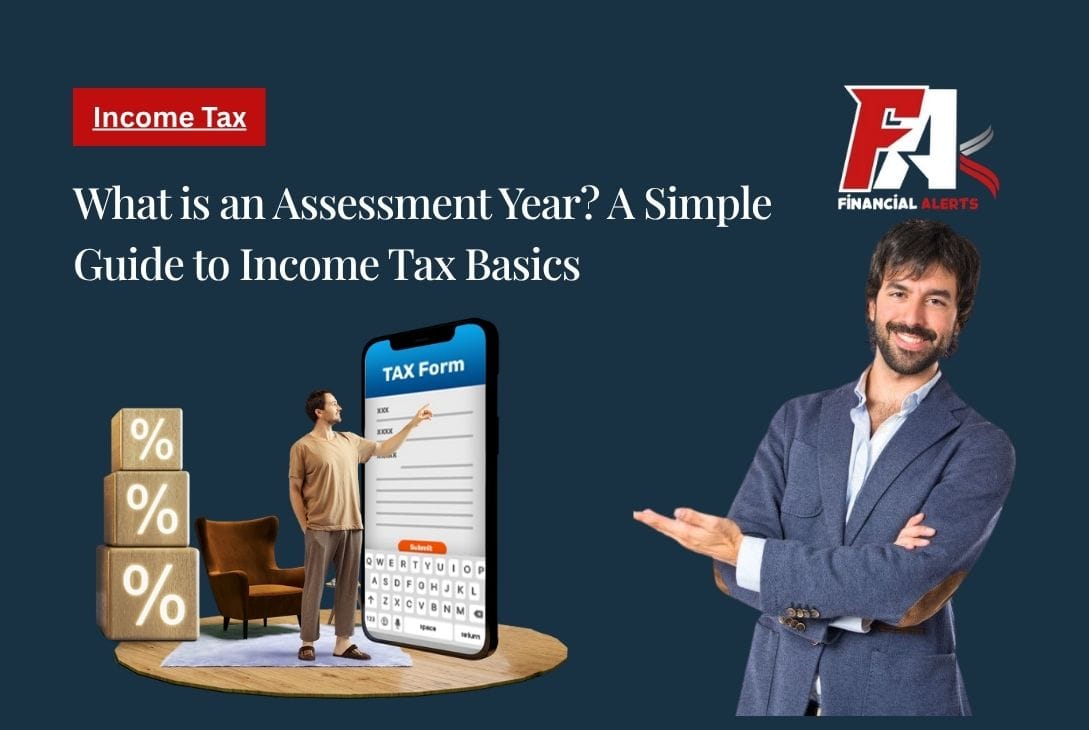An Assessment Year (AY) is the period during which the income you earned in the previous Financial Year (FY) is evaluated and taxed by the government. Simply put, if you earn money between April 2023 and March 2024, your income tax will be assessed and taxed in the following year — the Assessment Year 2024–25.
Basic Concepts of Income Tax in India
Financial Year vs. Assessment Year
What is a Financial Year (FY)?
A Financial Year is the time period from 1st April to 31st March, during which income is earned. It is referred to as the Previous Year in tax terms.
What is an Assessment Year (AY)?
The Assessment Year is the 12-month period immediately following the Financial Year. This is the year when:
- You file your tax return
- Your income is assessed
Tax liabilities are calculated and collected
Key Differences Between FY and AY
| Feature | Financial Year (FY) | Assessment Year (AY) |
| Income Status | Income is earned | Income is assessed |
| Time Period | 1st April – 31st March | Follows FY immediately |
| Tax Filing | Not applicable | Applicable |
The Role of AY in Tax Filing
When you’re filing your ITR, you don’t mention the year you earned the income (FY), but the year it’s being assessed — the AY. This helps tax authorities maintain consistency in tracking returns and collections.
Purpose and Importance of the Assessment Year
The Assessment Year serves as a structured timeline for tax evaluations and processing.
- Centralized Assessment: It ensures all incomes for a financial year are reviewed in a systematic window.
- Revenue Management: The government relies on AY data for budget planning and tax revenue tracking.
Audit and Compliance: AY also allows for scrutiny and auditing of returns with clear income timelines.
How to Identify the Correct Assessment Year
Simple Formula to Determine AY
The formula is straightforward:
Assessment Year = Financial Year + 1 year
So if your income was earned in FY 2022–23, your assessment year would be 2023–24.
AY Examples You Can Relate To
Earned income in: April 2021 – March 2022
→ AY: 2022–23
Earned income in: April 2022 – March 2023
→ AY: 2023–24
Mistakes to Avoid While Determining AY
- Selecting the current calendar year instead of the correct AY
- Mismatching income documents (like Form 16 or TDS) with the wrong AY
Filing ITR with incorrect AY, causing delays or rejection
AY in Income Tax Return (ITR) Filing
Why AY is Crucial in Filing ITR
The Assessment Year:
- Determines the applicable tax slab
- Links to the correct financial year’s income
- Helps claim deductions, refunds, or pay pending taxes
What Happens If You Use the Wrong AY?
You may face issues such as:
- ITR rejection or status as “Defective Return”
- Refund getting blocked or not processed
- Legal notices or fines
AY and TDS (Tax Deducted at Source)
TDS is deducted during the financial year, but:
- It’s reported and adjusted in the corresponding AY
Make sure your Form 26AS matches the AY you’re filing for
Practical Scenarios Explained
Salaried Individuals
Salaried people usually get a Form 16, which contains income details and tax deductions for the FY. You file the return in the AY following that.
Freelancers and Business Owners
They must keep clear records of invoices, expenses, and profits. All income from FY should be declared in the next AY.
NRIs and AY Implications
Non-resident Indians also need to follow the same AY format. They should verify if Double Taxation Avoidance Agreements (DTAA) affect their return timelines.
AY and Penalties
Missed Deadlines
- Late filing fees of up to ₹5,000 may apply
- You may lose eligibility to carry forward losses
Late Filing and Penalty Charges
Under Sections 234A/B/C, interest and penalties may be levied for:
- Not paying advance tax
- Delayed return filing
- Tax shortfall
AY and Interest on Late Taxes
The interest on unpaid or late-paid taxes is calculated based on the Assessment Year, not the FY.
Common Myths About Assessment Year
AY is Irrelevant if You’re Not Employed?
Incorrect. Even if you’re a student, freelancer, or investor, AY is relevant if you have taxable income.
AY for Various ITR Forms
AY in ITR-1 to ITR-7: All types of ITR forms — from ITR-1 (salaried) to ITR-7 (trusts/institutions) — require you to accurately mention the AY. It impacts calculations and processing.
AY and Online Tax Portals: Popular tax filing platforms like ClearTax, TaxBuddy, and the Income Tax portal prompt you to select AY. Choose wisely to avoid mismatch issues.
AY in the New Tax Regime
Does the New Tax Regime Affect AY?
Not at all. The choice between Old vs. New Tax Regime only affects your deductions and exemptions, not the AY.
Tools and Resources to Help You Understand AY
Here are some helpful tools to guide you:
- AY Calculators – Available on tax filing portals
- Income Tax Website – incometax.gov.in
Future of Assessment Year in India
Digitalization and AY Automation
The future looks promising with automation and AI-based platforms helping you auto-select the right AY during filing.
Will India Ever Merge FY and AY?
While it would simplify things, the distinction helps in proper compliance, auditing, and administrative control. So it’s unlikely, at least for now.
Conclusion
Summary of AY Basics
To put it simply — the Assessment Year is the year after the Financial Year, in which the income is assessed, taxed, and filed. Don’t let the terms confuse you. Just remember — you earn first, pay later. Get your dates right and your tax filing.

I am a digital marketing executive as well as content writer in the income tax and credit cards category. My goal is to provide simple, interesting and reliable information to readers through my articles so that they always stay updated with the world of income tax and credit cards.




[…] Mutual Funds to Invest in via […]
mdnt2j
ou18eh
w3fxnx